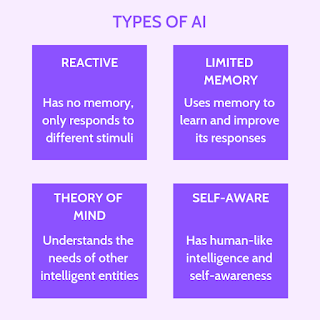In the digital world from the early 50s, we have seen digital computers starting as centralised Mainframes, Mini. In the early 80s we saw a great innovation, the advent of the desktop computer.
Later on in 2007 we saw another innovation, the mobile phone had computing capabilities, smart phone in 2016, wesee the mobile phone also getting great photography capabilities.
In the software side, the advent of iTunes in the early 2000 was indeed a great game changer for the music industry.
Frequently we opine that Innovation is a function of individual characteristics, subject expertise and organisation motivation. But rarely we look at the organisation structure that can can aid innovation.
Recently while researching through the Harvard Business Review on Innovation, I happened to see this article in the latest November-December 2020 issue of HBR titled "How Apple is organised for Innovation". (click here). It was an aye pener for me to understand how organisation structure can influence Innovation in the organisation.
Typically organisation at the time of starting are organised on functions, like Production, Planning, Marketing, HR, Finance, Accounts , Shipping etc... Bur a organisation grows, we find functional organisation become cumbersome and problemmatic , resulting in complex communication structures and often missed communication, resulting in sub-optimal decision making. As the organisation grows in size, products and plants, the senior management then takes the decision to reorganise on products, business units or divisions. The basic functions get replicated in all these divisional or plant organisations.
While researching I was fascinated to read how Apple Corp, has grown from its starting on April Fool's day in 1976 to the present day to turn in revenues of $260 billion, generating profits of $55 billion and with a market cap seven times to $1817 billion. (click here for Fortune site).
Apple Computers, Inc. was founded on April 1, 1976,
by college dropouts Steve Jobs and Steve Wozniak, who brought to the
new company a vision of changing the way people viewed computers. Jobs
and Wozniak wanted to make computers small enough for people to have
them in their homes or offices.
From 1976 since the start of Apple to 1985 when Jobs was kicked out of Apple Macintosh program. The Macintosh was getting popular and the author had the good opportunity to work on the Macintosh in Goa Engineering College.
What is interesting is to know how after Steve Jobs rejoined the company in 1997, 12 years after being chuckded out, it had revenues of $ 7 billion. By 2020 the revenues have grown to $260 billion, app 37x in a matter of 23 years.
When Steve Jobs died in 2011, the organisation had grown 15x to $108 billion in a matter of 14 years . After Time Cook took over in 2011 till 2020 in 9 years, the organisation has grown only 2.4 x.
We need to understand that this growth of Apple has happened over the last 50 years, during the growth of the digital age. Steve Jobs took the lead in exploiting digital tools and technology to take a company from scratch to a numero uno technology company of the world in 44 years.
What has not changed in Apple over these 44 years has been the organisation structure style. It initially was functionally organised and even to this day with $260 billion revenue, still continues to be functionally organised. Corporations that have grown this size all have changed their structure to be based on products, business units or divisions.
How has Apple managed to stick to the functional organisation style and still give exceptionally innovative products and outstanding usiness performance ?
Three leadership characteristics are vital here
1. Deep functional expertise of the members and leaders of teams
2. Immersion in deep details desired by customer, even going beyond.
3. Willingness to debate collaboratively across the organisation
Apple's leaders are all deeply knowledgeable in their specialised areas. Also the deep passion in their field of expertise and an unflinching commitment to give the best to the customer, whether he wants it or is aware of it or not at an affordable cost. combines with the willingness to challenge existing ideas and be willing to accept new ideas from the system have all been great inputs to the success of the organisation to a great extent.
For an Apple insider, this may not be apparent and visible, but for an outsider, the innovation process is interesting. While from 1997 to 2011, we find breakthrough innovation was happening in Apple, post Steve Jobs' tenure, the innovation is mainly incremental. Apple is yet to come up with a breakthrough product that can set a whole new industry following. Apple has been incrementally innovating it's earlier products. Like for instance the portrait mode in the camera that was made popular from the 2016 model of iPhone 7 onwards.
Why has Cook not been able to bring in a major breakthrough in the innovation process at Apple in the last 9 years ? We find only incremental innovations happening on the existing product. Does it require another person of the calibre of Jobs, different from Cook, to pursue with developers and know customer needs, likes and dislikes well to come up with a breakthrough innovation ?
But is one dependent only on breakthrough innovation all the time to succeed ? Take the example of Toyota, the Japanese automotive giant. Toyota never believed in breakthrough innovation, it has all the time carried out incremental innovation and is undoubtedly one of the largest automobile companies of the world.
Is incremental innovation better than breakthrough innovation ?
Citing research on Procter and Gamble and other small Consumer Packaged Goods (CPG) by Marcel Corstgens et al published in MIT Sloan Management Review and reported in HBR, (click here), it is found that though P&G spends a massive $1 billion every year on R&D, rarely has it come up with any radical or breakthrough innovation compared to the relatively small Reckitt Benckiser that has reported small gains over five to eight years in it's product line, resulting in slow and steady rise in profit and sales. McDonalds and Heinz have also reported small benefits with incremental innovation. Companies with large R&D budgets have only reduction in costs, improving profits than small companies who are achieving small definite gains taking them confidently forward.
How can organisations now in their advanced stages of growth organised on division or product line, realign to the functional style and innovate is an interesting point to be considered. The Apple's example was to demonstrate how innovation was supported in Apple with the functional organisation structure.
George ..































